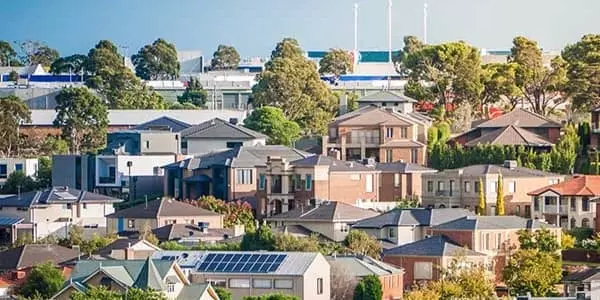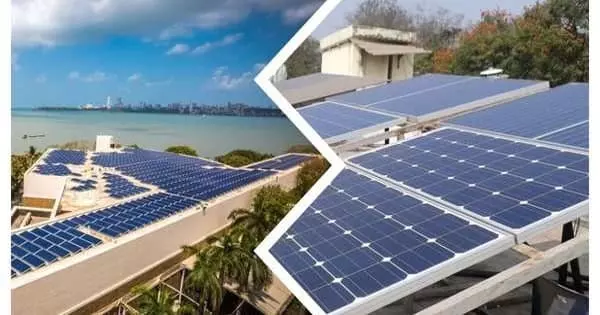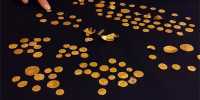According to new modeling, net zero carbon is within reach for a major Australian city through widespread adoption of photovoltaics in the built environment. Buildings in the City of Melbourne could provide 74 percent of their own electricity needs if solar technology is fully integrated into roofs, walls, and windows, according to new modeling on a scale ranging from individual structures to neighborhoods and an entire city.
The study, which was led by members of the ARC Centre of Excellence in Exciton Science at Monash University and collaborators from the University of Lisbon, is the first of its kind anywhere in the world to model the viability and impact of window-integrated photovoltaics, alongside other solar technologies, at a city scale. It was published in the journal Solar Energy.
The findings suggest that widespread adoption of existing rooftop PV technology throughout the city could drastically reduce Melbourne’s carbon footprint by reducing its reliance on grid electricity generated by burning fossil fuels. More gains could be realized by widely deploying emerging, highly efficient ‘solar windows’ and photovoltaic technology integrated into building facades.
The researchers hope that by using their modeling, policymakers, energy providers, construction companies, and building owners will be able to optimize the PV potential of both new and existing structures.
We could potentially see our CBD on its way to net zero in the coming decades by using commercially available photovoltaic technology and incorporating the expected advances in wall and window-integrated solar technology over the next ten years.
Professor Jacek Jasieniak
The researchers compared Melbourne’s 2018 electricity consumption to the potential electricity production from fully and widely integrated building-integrated solar. Consumption data from Melbourne’s CBD was obtained from the distribution companies Jemena, CitiPower, and Powercor and was accessed through the Centre for New Energy Technologies, an independent Victorian research body (C4NET).
Using city-scale modeling, they discovered that photovoltaics could meet 74% of Melbourne’s building consumption needs. Rooftop solar would account for 88% of this supply, with wall-integrated and window-integrated solar accounting for 8% and 4%, respectively.
Wall and window-integrated solar technology has been shown to have less efficiency loss during the winter months than rooftop solar, delivering more consistent year-round benefits and value. At the neighbourhood scale, the potential contribution of window-integrated solar increased to 18%, reflecting high building heights and window-to-wall ratios.

The researchers calculated the annual solar radiation on Melbourne’s building surfaces in order to identify suitable areas for PV installation while accounting for technical constraints and cost factors. The incident solar radiation and PV potential of urban areas were simulated using detailed modeling. A wide range of factors had to be considered, such as the impact of shadows cast by shading systems and balconies, as well as the performance characteristics of various solar technologies.
Correlation and linear regression analysis, among other techniques, were used to determine the relationship between urban form indicators and annual PV potential. The study covers a total area of 37.4 km2 in central Melbourne, of which 35.1km2 was built floor area in 2019, primarily consisting of residential and commercial buildings.
The findings revealed that the photovoltaics potential of this area is primarily driven by the possibility of adding more rooftop solar. While blocks with high rooftop and wall solar potential can be found throughout the city, the city’s high-density urban centers, such as the central business district, have the greatest potential for window-integrated solar gains.
“We could potentially see our CBD on its way to net zero in the coming decades by using commercially available photovoltaic technology and incorporating the expected advances in wall and window-integrated solar technology over the next ten years,” said lead author Professor Jacek Jasieniak.
“In the 1920s, we started importing coal-fired power from the LaTrobe Valley to stop the practice of burning smog-inducing coal briquettes onsite to power our CBD buildings, and it’s now possible that over a century later, we could see a full circle moment of Melbourne’s buildings returning to local power generation within the CBD, but using clean, climate-safe technologies that help us meet Australia’s Net Zero 2050 target.”
Dr. Jenny Zhou, co-author: “Although there are numerous policies that support energy-efficiency standards for new buildings, we have yet to see a significant response to ensuring that our existing buildings are retrofitted to meet the challenges of climate change. Our research provides a framework to assist decision-makers in moving forward with the implementation of photovoltaic technologies that will reduce our cities’ reliance on harmful fossil fuels.”
Dr. Maria Panagiotidou, first author: “Market penetration and deployment of high-efficiency solar windows can make a significant contribution to the carbon footprint reduction of high-rise developments in the near future. As the world moves toward a net-zero future, these local energy solutions will be critical in increasing the prevalence of PVs in urban areas.”
















